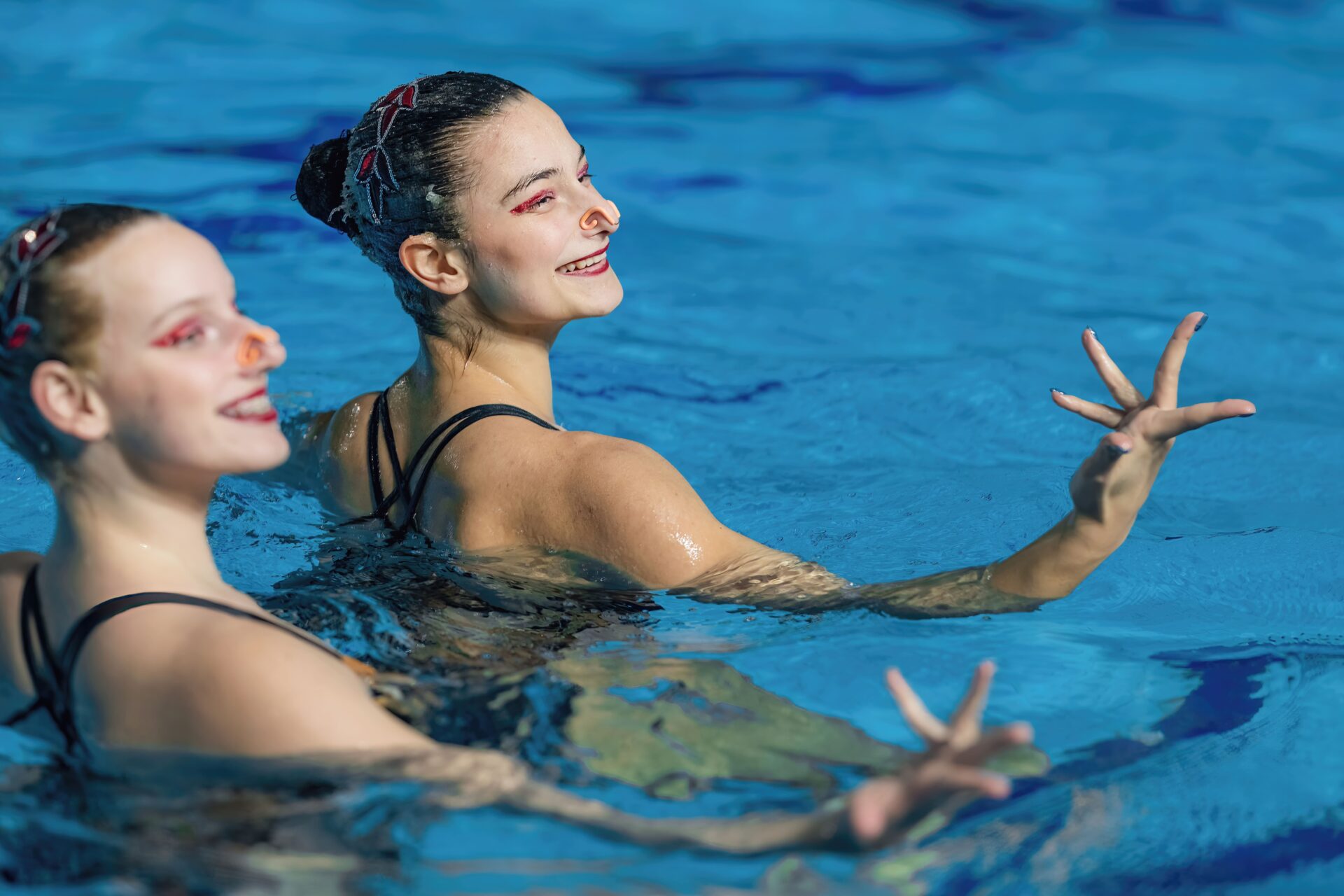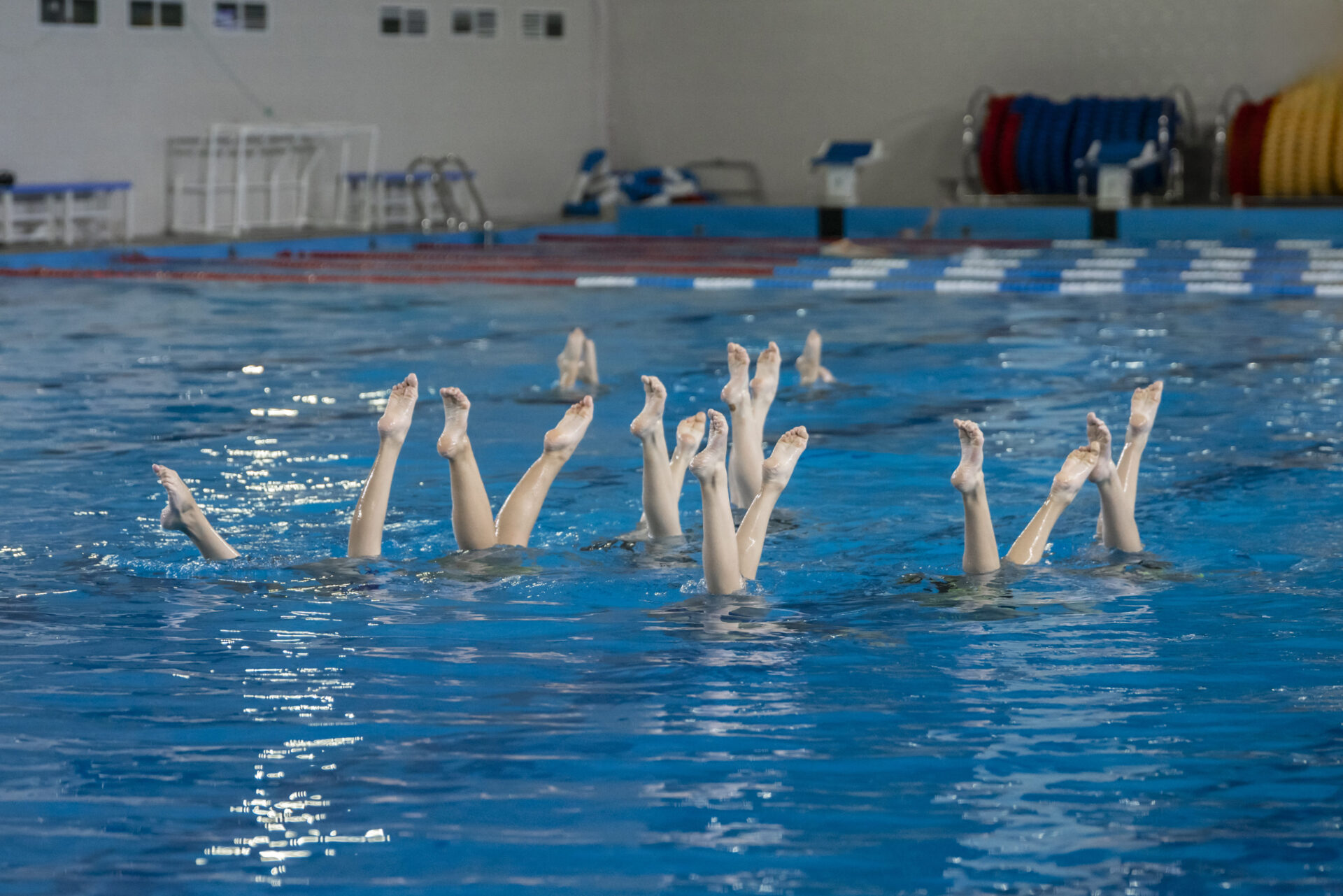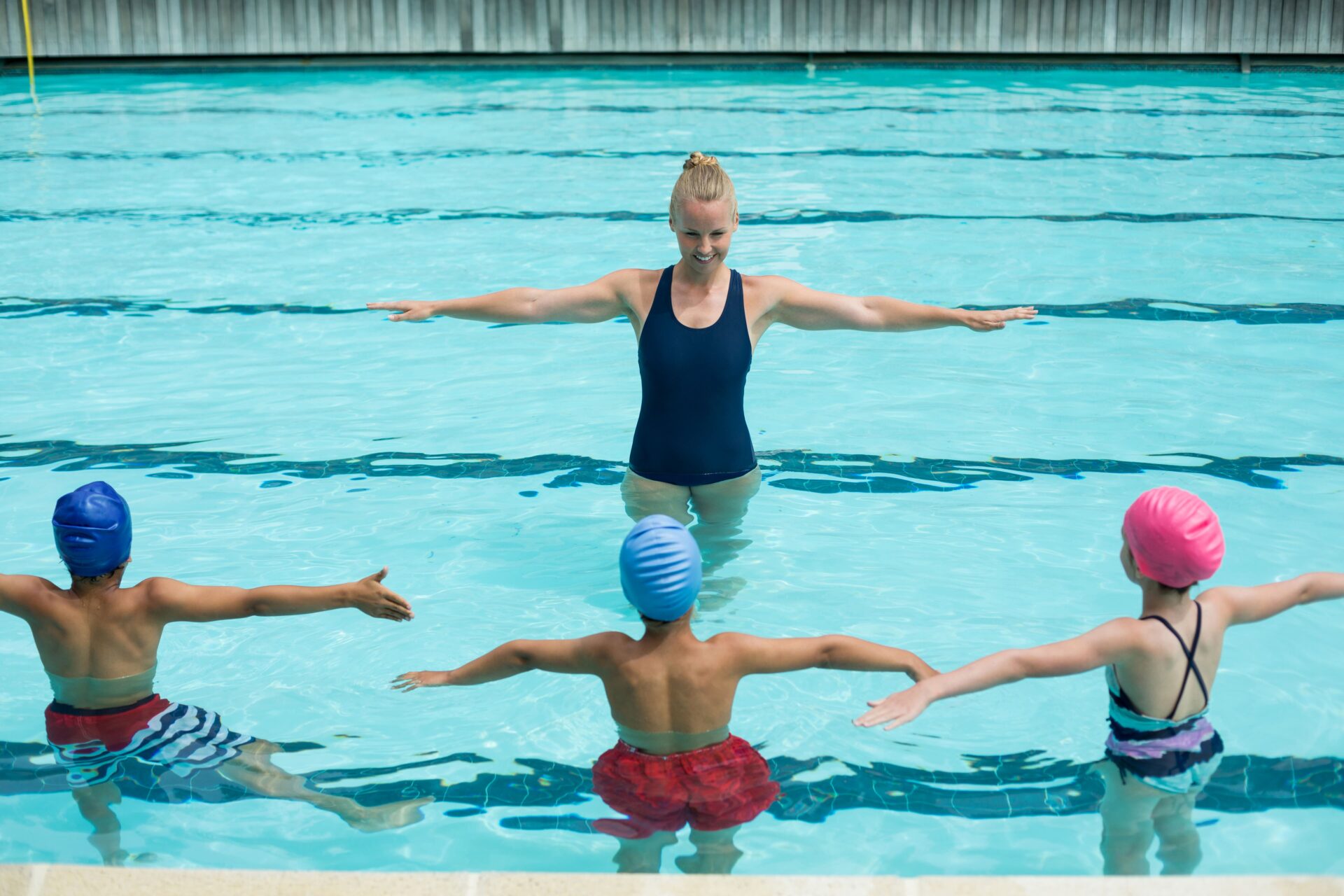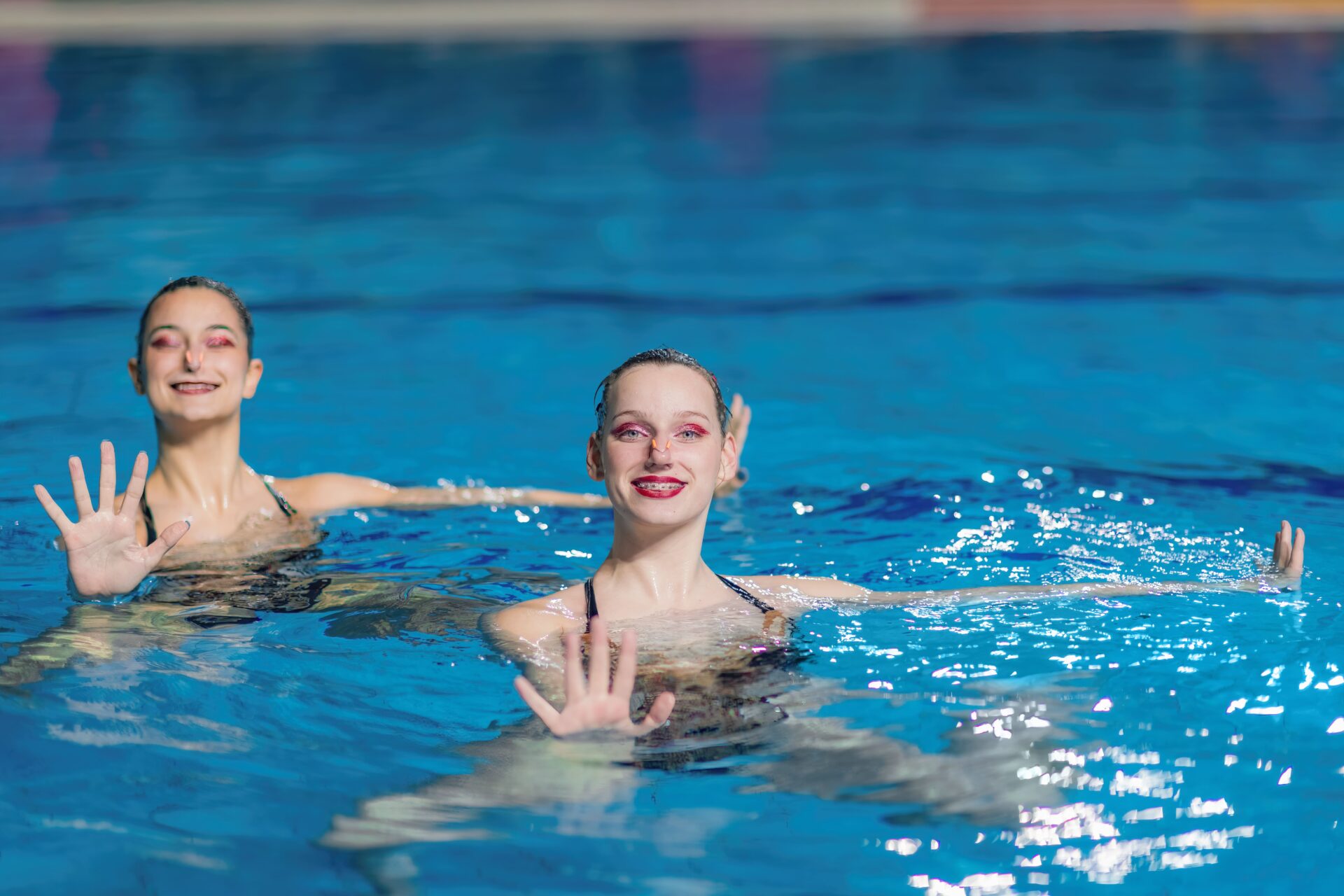Artistic swimming: history, rules and anecdotes
Why take an interest in artistic swimming?
Because artistic swimming is a unique aquatic spectacle that combines dance, gymnastics and swimming, all with breathtaking grace and synchronization! It demands unsuspected strength and endurance: prolonged apneas, underwater acrobatics and meticulous coordination between teammates. Artistic swimming develops flexibility, a sense of rhythm and team spirit. Whether you’re a fan of dance, music or simply curious, it’s hard to remain indifferent to these aquatic ballets. This sport could well amaze you!
👉 In this article:
- A look back at the history of artistic swimming
- Some surprising fun facts
- And, above all, a quick, clear reminder of the rules to help you understand how this sport is practised.
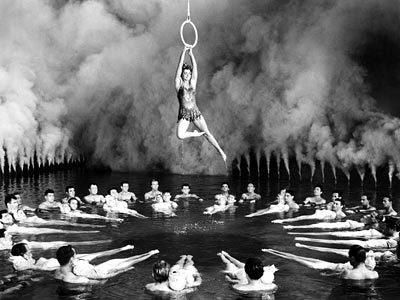
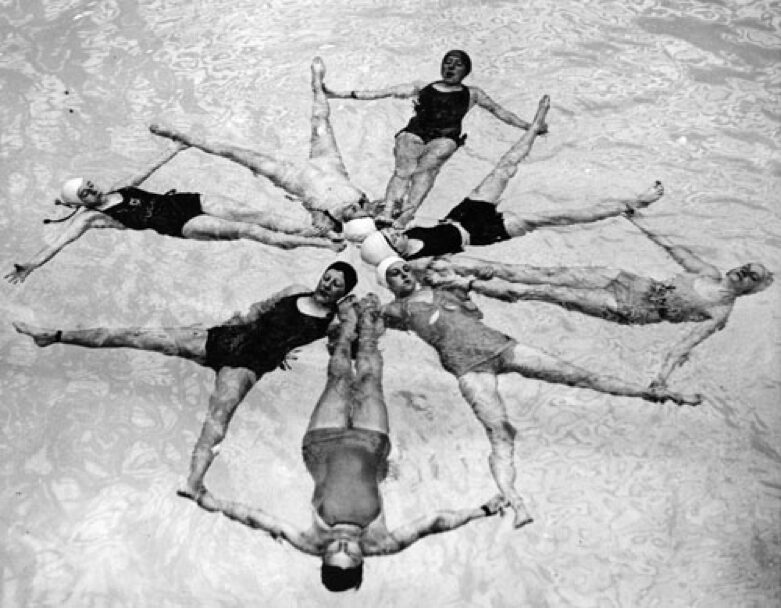
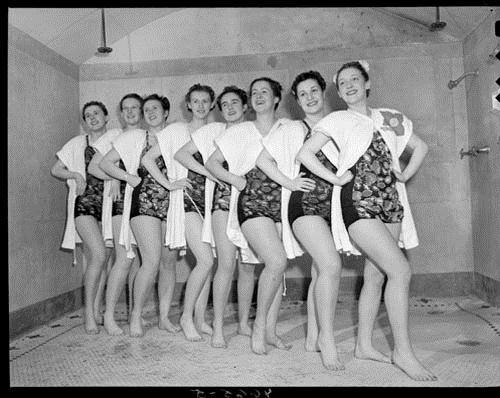
Before becoming artistic swimming, the sport was known for decades as synchronized swimming.
It all began at the end of the XIXᵉ century in Great Britain, where so-called “ornamental and scientific” swimming competitions saw the light of day. Swimmers perform series of figures in the water with no musical background. The very first competition is said to have taken place in 1892, and amazingly: it was for men only!
At the beginning of the XXᵉ century, the concept seduced North America. In 1907, Australian Annette Kellermann gave a show in New York combining swimming and grace, which drew curious crowds. In the 1920s, it was Canadian women, notably Peg Seller, who formalized the sport’s foundations: they added music, defined precise figures and laid down the first rules. The official term was synchronized swimming.
The 1930s-1940s saw an explosion in the sport’s popularity, thanks to troupes like the Modern Mermaids in Chicago, or the famous Hollywood studio water comedies starring Esther Williams. The artistic aspect of synchronized swimming became a real spectacle.
The discipline’s name was officially adopted in 1947. But the irony was that, while men had paved the way, for several decades competitions were exclusively for women.
It wasn’t until 1952 that synchronized swimming was recognized by the International Swimming Federation (FINA), and 1973 for the first world championships. The high point came in 1984, when the sport was included in the program of the Los Angeles Olympic Games, with two women’s events (solo and duet).
Thereafter, the level of competition continued to rise. From the 2000s onwards, Russia outrageously dominated the international scene, winning every Olympic gold medal from 2000 to 2016. In recent years, however, other countries such as China have been rising to the top and shaking up the hierarchy.
In 2017, the discipline officially changed its name to artistic swimming, to better reflect its expressive and creative dimension. Then in 2024, a major breakthrough for inclusion: men were finally allowed to compete in mixed team events at the Olympic Games. But despite this historic opening, not a single male swimmer was selected for Paris 2024, underlining both the progress made… and the progress still to be made to achieve true gender diversity at the highest level.
Canada played a major role in the development of artistic swimming. As early as the 1920s, Canadian pioneers were helping to structure the sport. Since then, the country has continued to shine: at the 1984 and 1988 Games, Canadian swimmers won several medals. Even today, thanks to dynamic programs in Quebec, Ontario and British Columbia, Canada remains one of the most active countries in training the next generation of artistic swimmers.


4 fun facts about artistic swimming


To keep their buns in place in the water, the swimmers use an original trick: they put gelatine on their hair before the event. Once hardened, it keeps the hairstyle in place, even when they dive and move around. That way, not a single strand sticks out as they go through!

To keep water out of their noses, swimmers almost always wear a nose clip. It’s a little accessory they put on before entering the water, especially when they’re doing upside-down or underwater tricks. And what if it falls off? They often hide a second one in their swimsuit, just in case!
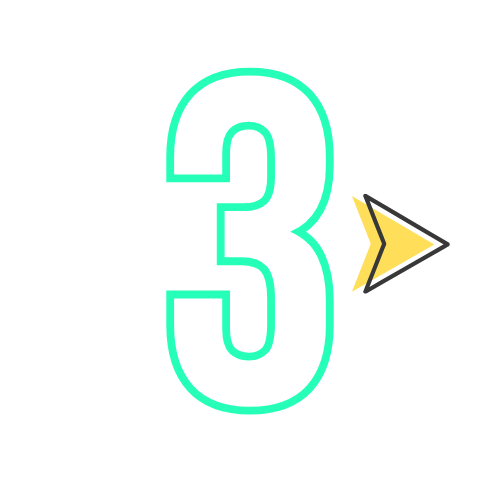
During events, music is also played underwater through special loudspeakers. This helps the swimmers to keep the rhythm.
And during training? Sometimes there isn’t even any music! The rhythm is set by tapping on a metal bar immersed in the water. Simple, but very effective!

In recent years, artistic swimming has become more spectacular, with more acrobatic movements, more impressive lifts and even more committed themes (ecology, equality…). It’s not just beautiful, it’s hard to watch!

The main rules of artistic swimming

AIM OF THE GAME, TERRAIN AND EQUIPMENT
Artistic swimming is a sport in which the swimmer performs a choreographed routine in the water to music, either solo, in a duet or as part of a team. The aim? To impress the judges with precise, creative and well-synchronized movements, while respecting a theme or mood. It’s a sport that combines grace, strength and coordination, where the aim is to achieve the best artistic and technical score, not a time or a score.
The events take place in a deep pool (around 3 meters if possible), as it is forbidden to touch the bottom during the performance. There are no balls or apparatus here: swimmers simply wear a decorated swimsuit, a cap, and often waterproof make-up to ensure they remain impeccable even after several minutes in the water. A nose clip is also essential to prevent water from entering the nose during underwater figures. Last but not least, the music, freely chosen, is played both in the room and underwater, to help athletes stay in rhythm even when submerged.
THE TESTS
Artistic swimming can be divided into several disciplines, depending on the number of participants, the type of choreography or the level of competition. Here are the main ones:
Solo: a swimmer performs a choreographed routine alone in the water, to a chosen piece of music. This is an individual event requiring technique, flexibility, endurance and expression.
Duo: two swimmers swim together in perfect synchronization. There’s also a mixed duet, with one man and one woman. Precision and harmony are essential.
Ballet (or team event): eight swimmers swim together. Since 2024, up to two men have been allowed on the team. This event focuses on coordination, varied formations and spectacular lifts.
Free combo: up to ten swimmers link several formations (solo, duet, trio, group) in a single choreography. It’s a highly visual event that plays on rhythm and diversity.
The highlight (or acrobatic ballet): a shorter but more spectacular team event. It features lifts, jumps and dynamic figures. This is often the most impressive event for the audience.
Compulsory figures: each athlete performs a series of precise technical figures alone, without music, in front of the judges. These figures are often compulsory in solo, duet or ballet, especially in youth or national competitions. In senior international competitions, they are sometimes replaced by a technical program integrated into the choreography.
RATING CRITERIA
In artistic swimming, the aim is not to finish as quickly as possible, but to produce the most successful performance possible, both technically and artistically. Athletes are evaluated by a jury according to a number of well-defined criteria.
1. Technical execution
Judges look for precision of movement, body control, neatness of figures, balance and stability. Every move counts, and the slightest mistake can cost points.
2. Synchronization
Essential in duets, ballets or combos: all movements must be performed perfectly at the same time, whether between swimmers or to the music. Even a slight visual discrepancy is visible… and penalized.
3. Difficulty
The more complex the figures, the more points they can earn. But they also have to be performed correctly! Judges take into account the level of technique and risk-taking in the choreography.
4. Artistic impression
This is what makes the magic of the show: the choice of music, the theme, the fluidity of the sequences, the originality, the emotion transmitted… Facial expression, attitude in the water and overall coherence are all taken into account.
5. Respecting the rules
The time is monitored: if the performance is too short or too long, a penalty is applied. The same applies if a swimmer touches the bottom or edges of the pool, or if the choreography starts or finishes outside the authorized time.
Come and play sports with us!
🎉Focus on BougeBouge events 🎉
📅 On the programme: sport for all !
BOUGEBOUGE BEACONSFIELD 2025 (13 /07/2025 ) : 1, 2 or 5 km turf course in Centennial Park, on the marina’s waterfront – a fun way to get moving with family and friends- MARATHON BOUGEBOUGE ET FESTIVAL DE VERDUN 2025 (14/09/2025):come and enjoy the mild September temperatures on a Boston-qualifying, Gold-certified course, with distances for all, from 1 km to 42.2 km.
- BOUGEBOUGE WAKEFIELD COURSE DU PONT COUVERT 2025 (12/10/2025):Discover the covered bridge and Gatineau Park during a friendly event with courses of 3, 5, 10 or 21.1 km, perfect for getting active with family and friends.
- BOUGEBOUGE KIRKLAND 2025 (19/10/2025) : Participate in BougeBouge Kirkland this fall and take up the 1 to 21.1 km challenge in a friendly and colourful atmosphere, solo, with family or friends.
Whether you’re an avid runner, an outdoor enthusiast or simply looking for a festive occasion, the upcoming BougeBouge events will provide you with a unique sporting experience in every corner of Quebec. So get set, get ready, get moving!🏃♀️🎉
Book your place now!
And to make sure you don’t miss a thing, you can follow us on our social networks!

